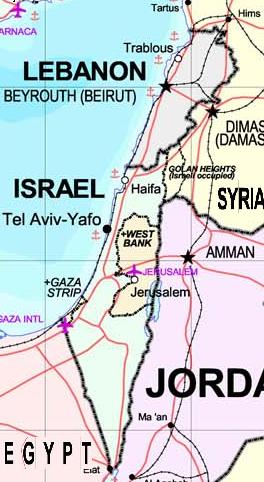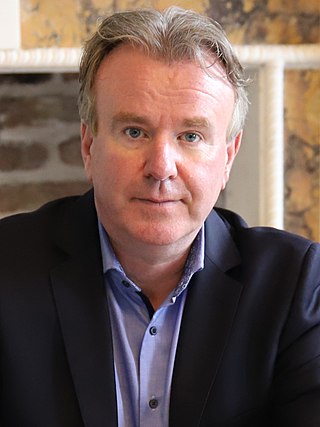
The Lebanese Civil War was a multifaceted armed conflict that took place from 1975 to 1990. It resulted in an estimated 120,000 fatalities and an exodus of almost one million people from Lebanon.

The Irish Army, known simply as the Army, is the land component of the Defence Forces of Ireland. The Irish Army has an active establishment of 7,520, and a reserve establishment of 3,869. Like other components of the Defence Forces, the Irish Army has struggled to maintain strength and as of April 2023 has only 6,322 active personnel, and 1,382 reserve personnel. The Irish Army is organised into two brigades.

The United Nations Interim Force in Lebanon, or UNIFIL, is a UN peacekeeping mission established on 19 March 1978 by United Nations Security Council Resolutions 425 and 426, to confirm Israeli withdrawal from Lebanon which Israel had invaded five days prior, in order to ensure that the government of Lebanon would restore its effective authority in the area. The 1978 South Lebanon conflict came in the context of Palestinian insurgency in South Lebanon and the Lebanese Civil War.

The Army Ranger Wing (ARW) is the special operations force of the Irish Defence Forces, the military of Ireland. A branch of the Irish Army, it also selects personnel from the Naval Service and Air Corps. It serves at the behest of the Defence Forces and Government of Ireland, operating internally and overseas, and reports directly to the Chief of Staff. The ARW was established in 1980 with the primary role of counter terrorism and evolved to both special operations and counter-terrorism roles from 2000 after the end of conflict in Northern Ireland. The unit is based in the Curragh Camp, County Kildare. The 2015 White Paper on Defence announced that the strength of the ARW would be considerably increased due to operational requirements at home and overseas.

The 1978 South Lebanon conflict began after Israel invaded southern Lebanon up to the Litani River in March 1978, in response to the Coastal Road massacre near Tel Aviv by Lebanon-based Palestinian militants. The conflict resulted in the deaths of 1,100–2,000 Lebanese and Palestinians, 20 Israelis, and the internal displacement of 100,000 to 250,000 people in Lebanon. The Israel Defense Forces gained a military victory against the Palestine Liberation Organization as the latter was forced to withdraw from southern Lebanon, preventing it from launching attacks on Israel from across its land border with Lebanon. In response to the outbreak of hostilities, the United Nations Security Council adopted Resolution 425 and Resolution 426 on 19 March 1978, which called on Israel to immediately withdraw its troops from Lebanon and established the United Nations Interim Force in Lebanon (UNIFIL).

The South Lebanon Army or South Lebanese Army, also known as the Lahad Army or as the De Facto Forces (DFF), was a Christian-dominated militia in Lebanon. It was founded by Lebanese military officer Saad Haddad in 1977, amidst the Lebanese Civil War, and evolved to operate as a quasi-military during the South Lebanon conflict, basing itself in Haddad's unrecognized State of Free Lebanon.

The Israeli–Lebanese conflict, or the South Lebanon conflict, is a series of military clashes involving Israel, Lebanon and Syria, the Palestine Liberation Organization, as well as various militias acting from within Lebanon. The conflict peaked in the 1980s, during the Lebanese Civil War, and has abated since.

The South Lebanon conflict, designated by Israel as the Security Zone in Lebanon Campaign, was a protracted armed conflict that took place in southern Lebanon from 1985 to 2000. It saw fighting between Israel and the Catholic Christian-dominated South Lebanon Army (SLA) against Hezbollah-led Shia Muslim and left-wing guerillas within the Israeli-occupied "Security Zone"; the SLA had military and logistical support from the Israel Defense Forces over the course of the conflict and operated under the jurisdiction of the Israeli-backed South Lebanon provisional administration, which succeeded the earlier Israeli-backed State of Free Lebanon. It can also refer to the continuation of the earlier conflict in this region involving the growing Palestinian insurgency in South Lebanon against Israel following the expulsion of the Palestine Liberation Organization (PLO) from Jordan after Black September. Historical tensions between Palestinian refugees and Lebanese factions contributed another layer to the Lebanese Civil War (1975–1990), which saw the Maronite-led Lebanese Front and the Shia Amal Movement at war with the PLO. Hence, the South Lebanon conflict can partly be seen as an extension of the civil war that ended in 1990.

The Battle of Bint Jbeil was one of the main battles of the 2006 Lebanon War. Bint Jbeil is a major town of some 20,000 inhabitants in Southern Lebanon. Although Brig.-Gen. Gal Hirsch announced on 25 July that the Israel Defense Forces (IDF) had "complete control" of Bint Jbeil, this statement was later discredited. In spite of three sustained attempts by the IDF to conquer the town, it remained in the hands of Hezbollah until the end of the war. The town was the scene of some of the fiercest fighting of the war, with both sides taking heavy losses. Three senior Israeli officers, including Major Roi Klein, were killed in the battle. Hezbollah similarly lost several commanders, most notably Khalid Bazzi, commander of the Bint Jbeil area.

During the 2006 Lebanon War, a number of international incidents occurred in Lebanon, largely involving United Nations personnel in Lebanon, who have come under a number of attacks by Israel forces. On 25 July 2006, four unarmed United Nations Truce Supervision Organization (UNTSO) peacekeepers were killed during an Israeli air strike on a UN observation post in southern Lebanon. Israel later stated that the attack was an error due to the incorrect identification of the UN position as a militant enemy post.

The 2006 Lebanon War, also called the 2006 Israel–Hezbollah War and known in Lebanon as the July War and in Israel as the Second Lebanon War, was a 34-day military conflict in Lebanon, northern Israel and the Golan Heights. The principal parties were Hezbollah paramilitary forces and the Israel Defense Forces (IDF). The conflict started on 12 July 2006, and continued until a United Nations-brokered ceasefire went into effect in the morning on 14 August 2006, though it formally ended on 8 September 2006 when Israel lifted its naval blockade of Lebanon. Due to unprecedented Iranian military support to Hezbollah before and during the war, some consider it the first round of the Iran–Israel proxy conflict, rather than a continuation of the Arab–Israeli conflict.
Lieutenant General William "Bull" O'Callaghan, BSD was an Irish Army officer.
On the 30 of September 1992, a series of clashes in South Lebanon between Hezbollah and the South Lebanon Army killed 9 people, including one UNIFIL peacekeeper.
Khalid Ahmad Bazzi was a commander in Hezbollah's military wing, the Islamic Resistance in Lebanon. In the 2006 Lebanon War he was commanding officer in the defence of Maroun ar-Ras and Bint Jbeil. The heavy Israeli casualties and lack of progress of its army in these two battles is widely seen as the main cause of the Israeli failure in the war.

The Israeli occupation of Southern Lebanon formally began in 1985 and ended in 2000 as part of the South Lebanon conflict. In 1982, Israel invaded Lebanon in response to a spate of attacks carried out from Lebanese territory by Palestinian militants, triggering the 1982 Lebanon War. The Israel Defense Forces (IDF) and allied Christian Lebanese militias subsequently seized large parts of Lebanon, including the capital city of Beirut, amid the hostilities of the wider Lebanese Civil War. Israel later withdrew from most of the occupied territory between 1983 and 1985, but retained control over areas along the Israel–Lebanon border that would later comprise the Israeli "Security Zone" in coordination with the separatist State of Free Lebanon, which collapsed in 1984. From 1985 onwards, Israel supported the South Lebanon Army (SLA), the Lebanese Christian quasi-military of the collapsed Free Lebanon State, against Hezbollah and other Muslim militants in most of Southern Lebanon; Israel's overall stated purpose for the Security Zone was to create a buffer separating Israeli civilians in northern border towns from Lebanon-based terrorists. In 1993, it was estimated that there were 1,000–2,000 Israeli troops and 2,300 SLA troops active in the area.

Aql Hashem, also spelled Akel Hashem, was a Colonel in the South Lebanon Army (SLA) and served under Colonel Saad Haddad and later Lieutenant General Antoine Lahad. He was killed in a remote-controlled bomb attack by Hezbollah in his farm in January 2000. His death was widely interpreted as the beginning of the end of the Israel-backed SLA.

Thomas Martin Clonan is an Irish senator, security analyst, author and retired Irish Army Captain. He was elected to Seanad Eireann in March 2022 in the 2022 Dublin University by-election.

Baraachit, also spelt Brashit, is a rural town located in the Nabatiye Governorate, in the Bint Jbeil District of southern Lebanon, ca. 3.5 kilometres (2.2 mi) southeast of Tibnine and about 80 kilometres (50 mi) from Beirut. The village sits on an elevation of 832 metres (2,730 ft) above sea level. The town has a mixed population of Shi'a and Christians.
Dan Harvey is an Irish military historian, author, and retired Lieutenant Colonel in the Irish Defence Forces.
The 4th Infantry Battalion was an Infantry Battalion of the Irish Army from 1923 to 2012 based out of Collins Barracks, Cork. It was one of the oldest units of the Irish Army before its disbandment.













